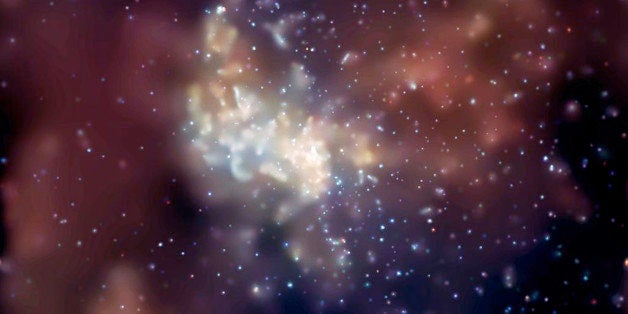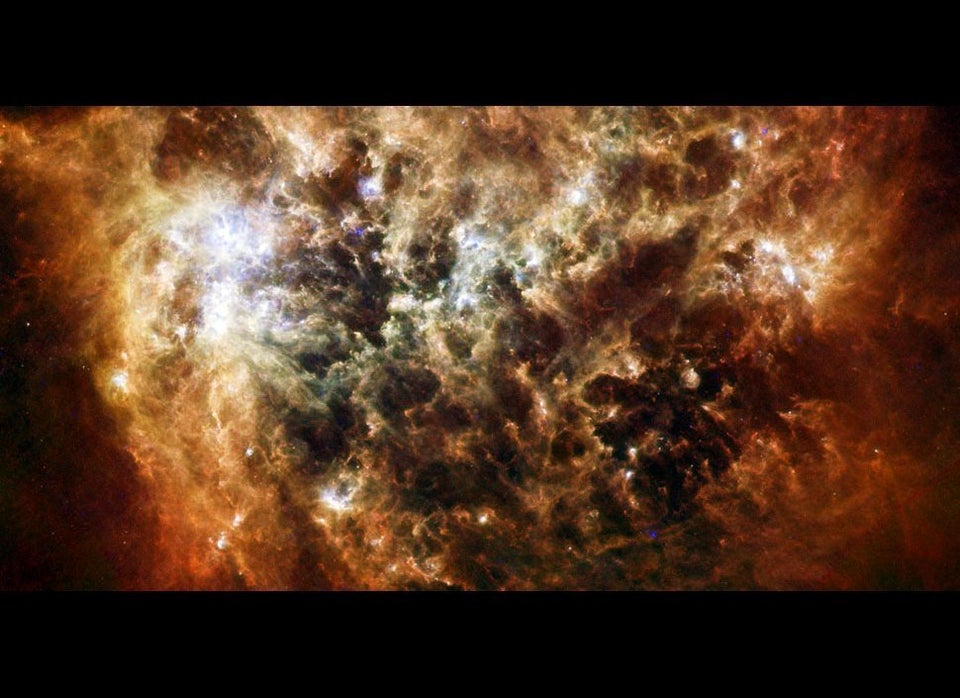
The officials who put on the Nathan's hot dog eating contest need to put their money where their mouth is if they're serious about advancing science.
Rather than staring at dinner plates, the International Federation of Competitive Eating's "research division" plans to turn its attention to the skies to watch a real eater in action.
The black hole at the center of the Milky Way, Sagittarius A*, is expected to devour an approaching gas cloud beginning later in March.
There's debate among astronomers over what will happen during the galactic gastronomic event 26,000 light years away. But IFOCE wants "to identify intake methods that can be employed by humans to increase eating efficiency on Earth."
IFOCE's showman CEO George Shea has turned to the W.M. Keck Observatory, one of the most powerful astronomical facilities, with a request to let his eager, but perhaps hapless researchers use the two telescopes atop a dormant Hawaiian volcano.
"We estimate that we will need no more than 90 minutes," Shea wrote to Keck Observatory Director Taft Armandroff in a letter dated Feb. 26. "[B]ut it is likely that we will require some operational instruction as we have not previously worked with an infrared telescope."
"We have never received a letter like this before," Armandroff said. "This was not a typical day as an observatory director. I was thrilled that the word of our research on the galactic center had reached such a wide audience outside of our rather tight-knit astronomy community."
Shea should wish on a shooting star, though, to get his hungry team in the door to witness a phenomenon never seen before by astronomers.
Research time is allocated to scientists from the University of California, the California Institute of Technology and NASA -- Keck's three owners -- based on each organization's contribution to the observatory's budget and by the merits of their proposals. Every minute through the end of July was booked months in advance, Armandroff said.
The IFOCE offered Keck an "honorarium for this courtesy" of using the telescopes while the merit of their endeavor speaks for itself.
"It's the funniest request I've ever seen," said UCLA physicist Andrea Ghez, who discovered Sagittarius A* in 1998 using Keck's telescopes.
Citing previous breakthrough work proving why overweight individuals make lousy competitive eaters -- the Belt of Fat Theory -- and how to efficiently consume chicken wings, Shea thinks IFOCE researchers deserve a seat at the table.
"This has been our biggest struggle as an institution -- gaining credibility," Shea wrote in an email to HuffPost.

Ghez will spend the spring and summer using Keck to watch the mysterious cloud travel on its orbit extremely close to the gaping, gravitational maw of Sagittarius A*.
"We're looking at the dining habits of the black hole," Ghez told HuffPost. "I always say the black hole is on a diet. It's really weak. Right now, it's a snacker and it might go on a binge."
Astronomers have never seen Sagittarius A* gobble up anything.
Some have said there's a chance it will be a feast for the eyes (aided by ultra-powerful telescopes, of course). The black hole might pulse with light if the gas cloud is pure.
"The fundamental question is whether or not it's a pure gas cloud or whether there's a star in the middle of it," Ghez said to HuffPost. "You don't know till you pull off the outer layer. If you see an object that still survives, that will tell you there was a star.
"There's a lot of controversy. We're baffled," Ghez said. "I'm quite skeptical about any fireworks. No matter what, something interesting is going to happen."
There's a glimmer of hope for IFOCE. All data recorded by the telescopes becomes publicly available after a proprietary period.
"Even without the august academic credentials," Armandroff said. "They could analyze some of the archived material."
 Like Us On Facebook |
Like Us On Facebook |  Follow Us On Twitter |
Follow Us On Twitter | ![]() Contact The Author
Contact The Author

